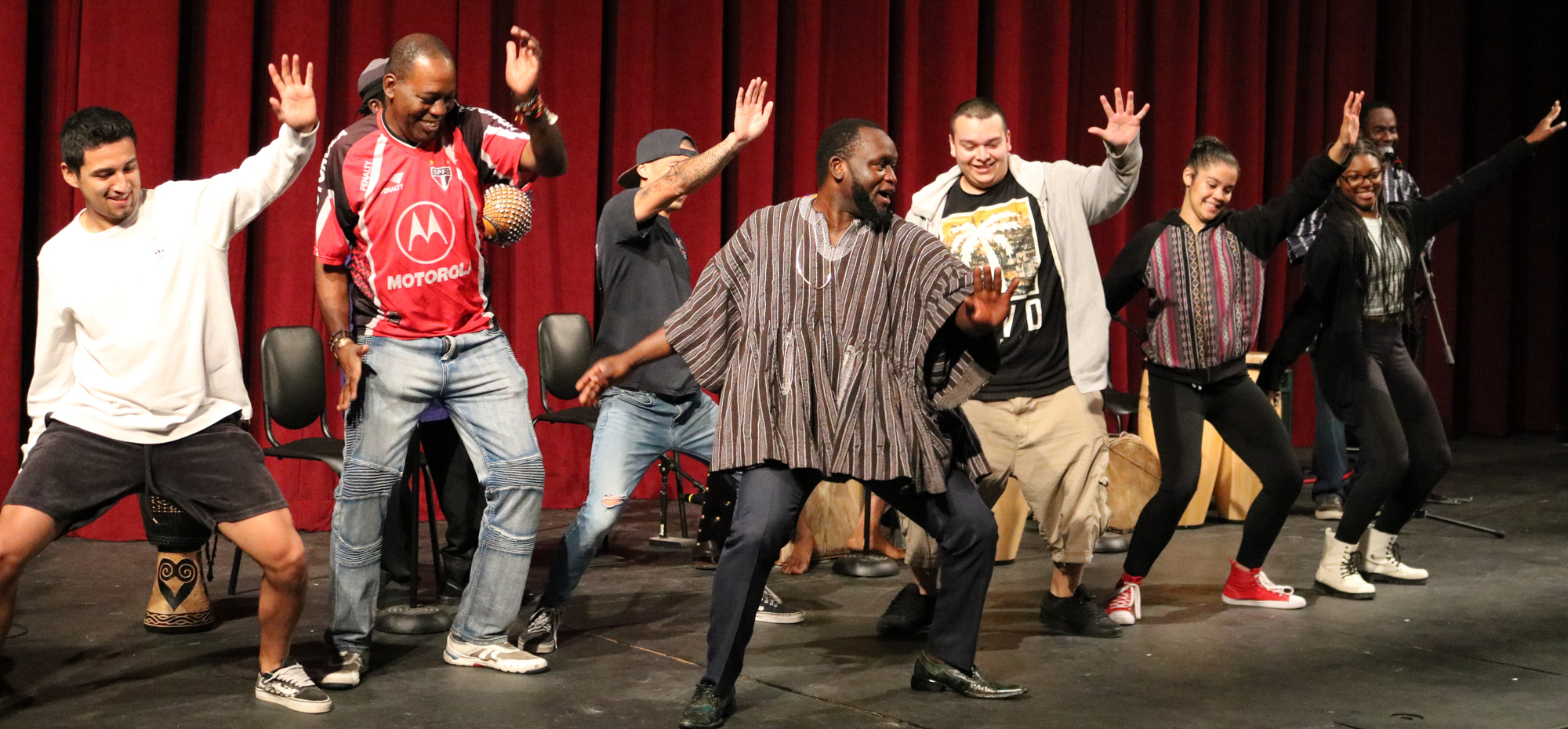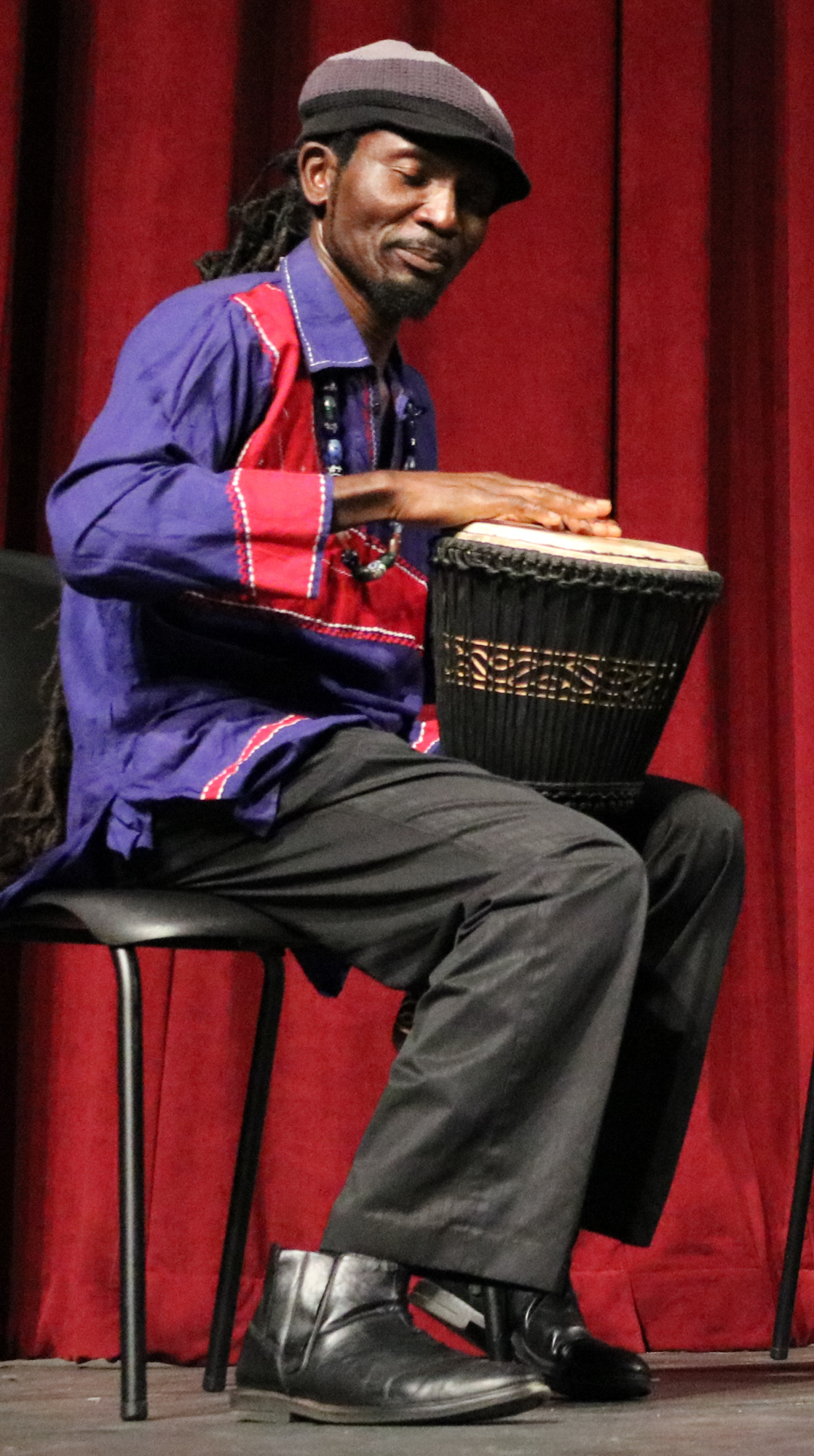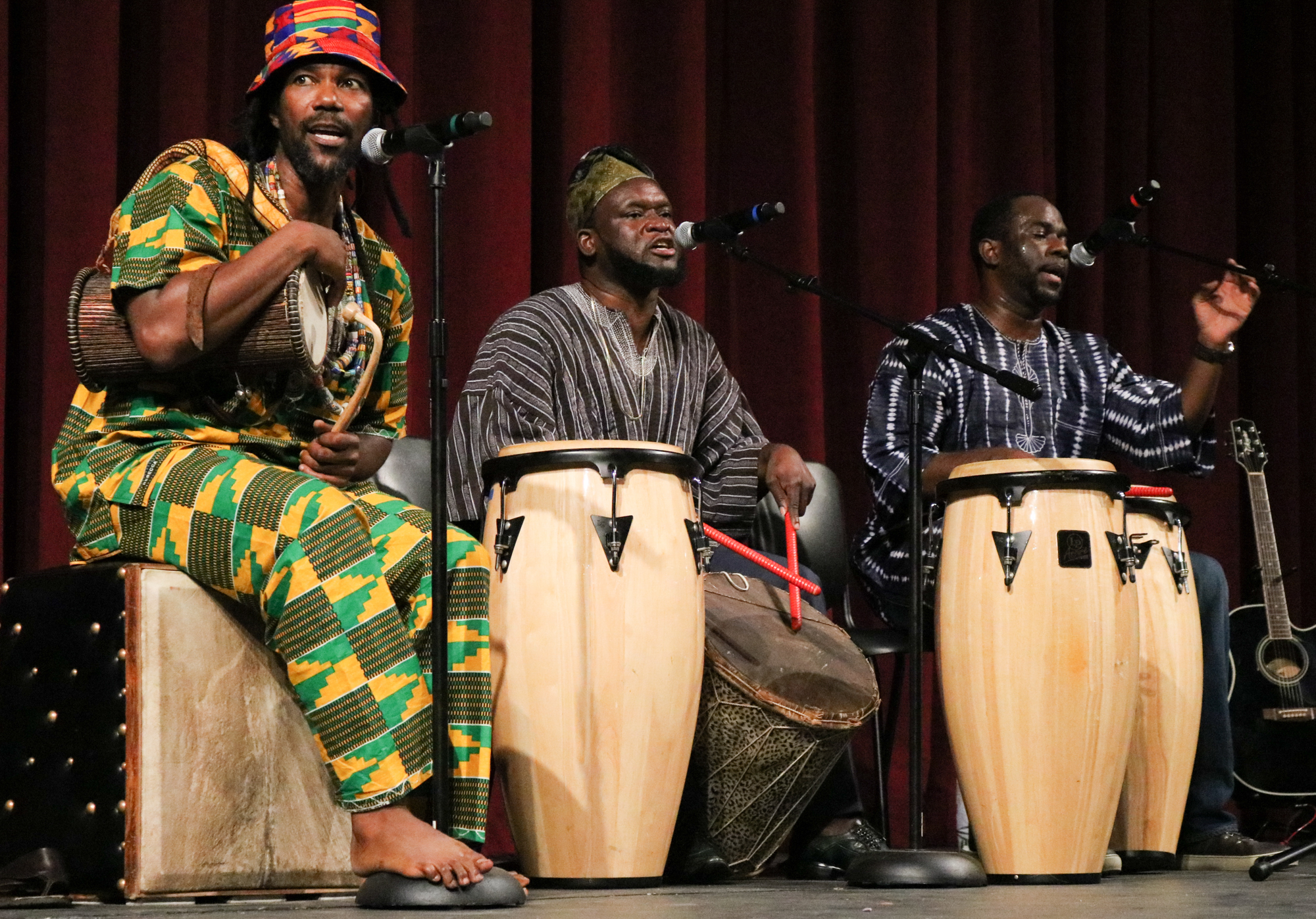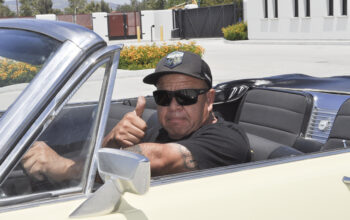As the audience found their seats, all that lay before them were instruments and chairs, with no musicians too be seen. Seemingly from nowhere, a drum started beating, and then another, and almost immediately as if by natural instinct the crowd began clapping to the rhythm. From behind the curtain entered Afrikasa, one member at a time, each beating a lung drum.
The band consisted of 4 members, one bassist, one guitarist, and two drummers. After their intro song, one of the band members yelled out “Greetings everyone when someone says Akwaaba, it means welcome, so when I say Akwaaba, you say it back,” said Marwan Morgrabi, to which the audience shouted back at him.
It was from there that they transitioned into their first song, Dagomba, a piece about the common troubles of everyday life. None of the drummers missed a beat.
Transitioning into their next song Mother Africa, Marwan Morgrabi, one of the band members, once again reached out to the crowd, asking them who wanted to go to the jungles of Africa with them, to which the crowd cheered. The song was instrumental, but not lyricless, as with their drums they communicated a story, as to what can only be described by the band as “Drum Poetry.”
The song had a slow tempo throughout, but then the song began to speed up, to which impressive feats of percussion were displayed, leading to a dramatic finish.
After the song fellow member and Chief Swale began explaining their two main drums, the lung and gungon nu drum. Both originate from Northern Ghana and are used as a form of communication in that country.
“The Lung Drum is the one who speaks, while the gungon nu drum is the one who answers, Marwan Morgrabi said.
After which the group began to call up volunteers to dance during their next song, Kente Dress dance. A total of 10 participants walked on stage, with Marwan Morgrabi, noting how this is the first time they have ever had more males than females come up to dance. The song consisted of a solid percussion piece, now accompanied with a suiting dance routine.
When the song ended, the participating dancers returned to their seats, and the band began prepping for their final song, Afrikasa. This is also the bands nam, which translates to Africa speaks, Africa dances and Africa heals. After beginning to play, the band begins throwing instruments to audience members, encouraging them to come and play until the song came to an end.
“If you all are wondering, these instruments are all from home depot,” Kweku Anash said jokingly as the performance wrapped up.
The next concert will be held Thursday, Oct. 11, featuring jazz vocalist Karolina and Tom Rainer on jazz piano at the PAB Mainstage at 1 p.m.







